Potřebujeme váš souhlas k využití jednotlivých dat, aby se vám mimo jiné mohly ukazovat informace týkající se vašich zájmů. Souhlas udělíte kliknutím na tlačítko „OK“.
ASTM E2096/E2096M-10
Standard Practice for In Situ Examination of Ferromagnetic Heat-Exchanger Tubes Using Remote Field Testing
Automaticky přeložený název:
Standardní praktiky pro in situ vyšetření feromagnetických tepelného výměníku trubky Použití vzdálené testování v terénu
NORMA vydána dne 1.9.2010
Informace o normě:
Označení normy: ASTM E2096/E2096M-10
Poznámka: NEPLATNÁ
Datum vydání normy: 1.9.2010
Kód zboží: NS-44270
Počet stran: 9
Přibližná hmotnost: 27 g (0.06 liber)
Země: Americká technická norma
Kategorie: Technické normy ASTM
Kategorie - podobné normy:
Anotace textu normy ASTM E2096/E2096M-10 :
Keywords:
eddy current, electromagnetic testing, ferromagnetic tube, remote field testing, RFT, tube, tubular products, Electromagnetic (eddy current) testing, Ferromagnetic pipe/tube, Field testing--pipe construction/applications, In-situ inspection/analysis, Nondestructive evaluation (NDE)--metallic materials, Remote field testing (RFT), Tubular products, Eddy current examination, ICS Number Code 23.040.10 (Iron and steel pipes)
Doplňující informace
| Significance and Use | ||||||
|
The purpose of RFT is to evaluate the condition of the tubing. The evaluation results may be used to assess the likelihood of tube failure during service, a task which is not covered by this practice. Principle of Probe Operation—In a basic RFT probe, the electromagnetic field emitted by an exciter travels outwards through the tube wall, axially along the outside of tube, and back through the tube wall to a detector (Fig. 2a). Flaw indications are created when (1) in thin-walled areas, the field arrives at the detector with less attenuation and less time delay, (2) discontinuities interrupt the lines of magnetic flux, which are aligned mainly axially, or (3) discontinuities interrupt the eddy currents, which flow mainly circumferentially. A discontinuity at any point on the through-transmission path can create a perturbation; thus RFT has approximately equal sensitivity to flaws on the inner and outer walls of the tube. 5.3 Warning Against Errors in Interpretation. Characterizing flaws by RFT may involve measuring changes from nominal (or baseline), especially for absolute coil data. The choice of a nominal value is important and often requires judgment. Practitioners should exercise care to use for nominal reference a section of tube that is free of damage (see definition of “nominal tube” in 3.2.3). In particular, bends used as nominal reference must be free of damage, and tube support plates used as nominal reference should be free of metal loss in the plate and in adjacent tube material. If necessary, a complementary technique (as described in 11.12) may be used to verify the condition of areas used as nominal reference. Probe Configuration—The detector is typically placed two to three tube diameters from the exciter, in a location where the remote field dominates the direct-coupling field. Other probe configurations or designs may be used to optimize flaw detection, as described in 9.3. Comparison with Conventional Eddy-Current Testing—Conventional eddy-current test coils are typically configured to sense the field from the tube wall in the immediate vicinity of the emitting element, whereas RFT probes are typically designed to detect changes in the remote field. |
||||||
| 1. Scope | ||||||
|
1.1 This practice describes procedures to be followed during remote field examination of installed ferromagnetic heat-exchanger tubing for baseline and service-induced discontinuities. 1.2 This practice is intended for use on ferromagnetic tubes with outside diameters from 0.500 to 2.000 in. [12.70 to 50.80 mm], with wall thicknesses in the range from 0.028 to 0.134 in. [0.71 to 3.40 mm]. 1.3 This practice does not establish tube acceptance criteria; the tube acceptance criteria must be specified by the using parties. 1.4 Units—The values stated in either inch-pound units or SI units are to be regarded separately as standard. The values stated in each system may not be exact equivalents; therefore, each system shall be used independently of the other. Combining values from the two systems may result in nonconformance with the standard. 1.5 This standard does not purport to address all of the safety concerns, if any, associated with its use. It is the responsibility of the user of this practice to establish appropriate safety and health practices and determine the applicability of regulatory limitations prior to use. |
||||||
| 2. Referenced Documents | ||||||
|
Podobné normy:
Historická
1.5.2014
Historická
1.3.2012
Historická
1.3.2012
Historická
1.3.2012
Historická
1.3.2012
Historická
1.5.2012
Odebírejte informace o nově vydaných normách ZDARMA:
Chcete pravidelně odebírat informace o nově vycházejících normách z celého světa a to zcela zdarma?
Přihlašte se k odběru. Vše je velice jednoduché a absolutně ZDARMA.
Na výběr máte vydavatele z celého světa.


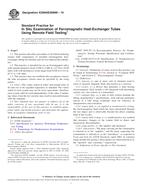
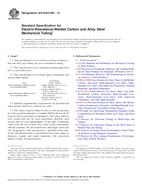 ASTM A513/A513M-14..
ASTM A513/A513M-14..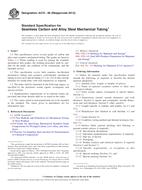 ASTM A519-06(2012)..
ASTM A519-06(2012)..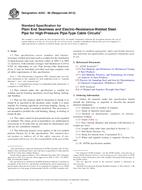 ASTM A523-96(2012)..
ASTM A523-96(2012)..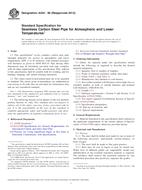 ASTM A524-96(2012)..
ASTM A524-96(2012)..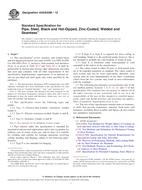 ASTM A53/A53M-12..
ASTM A53/A53M-12..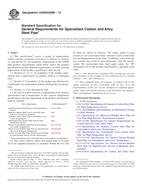 ASTM A530/A530M-12..
ASTM A530/A530M-12..
 Cookies
Cookies
